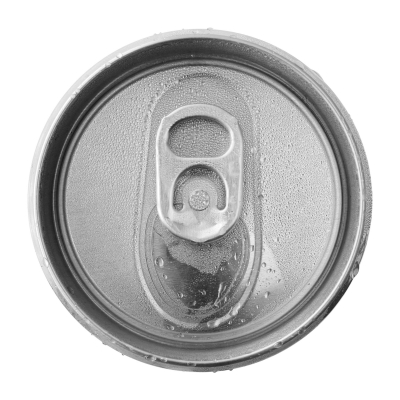Diet Soda: Good or Bad for Your Heart Health
 Research is shedding light on the impact drinking diet soda can have on your health. A study with 2,500 participants was presented at the American Stroke Association International Stroke Conference. Study results found those who drank diet soda daily had a 61 percent increased risk of cardiovascular events versus those who did not consume soda. These results remained even when factors such as smoking, physical activity levels, alcohol consumption, and dietary intake were taken into account.
Research is shedding light on the impact drinking diet soda can have on your health. A study with 2,500 participants was presented at the American Stroke Association International Stroke Conference. Study results found those who drank diet soda daily had a 61 percent increased risk of cardiovascular events versus those who did not consume soda. These results remained even when factors such as smoking, physical activity levels, alcohol consumption, and dietary intake were taken into account.
Researchers did go a step further and took into account these 3 situations:
- Metabolic Syndrome
- Peripheral Vascular Disease
- Cardiac Disease History
When these were factored in, the cardiovascular risk associated with drinking diet soda did decrease to 48%… 48% is still significant.
The connection between diet soda and cardiovascular risk appears to be related to metabolic syndrome. Metabolic syndrome is the name given to a group of risk factors that raise your risk for heart disease. These risk factors include: Continue reading
5 Steps for Heart Health, Starting Now

On the road to heart health, start with weight control. Reaching and maintaining a healthy weight promotes overall health and prevents many diseases, including heart disease. Living with extra weight, puts an increased burden on your heart muscle. Being overweight or obese puts you at increased risk for high blood pressure, type 2 diabetes, certain cancers, and other health
Here are five additional steps you can take for heart health:
1. Exercise more.
Being inactive is a major risk factor for heart disease. Regular exercise, particularly aerobic exercise, has many heart related benefits. For example, exercise will strengthen your heart, improves circulation, and lowers blood pressure.
2. Cut back on salt.
Salt can hide in places you may not expect. Read food labels. For some individuals, a high sodium diet is linked to high blood pressure. High blood pressure puts excess work on the heart and can lead to stroke and heart failure.
3. Avoid trans fat.
Trans fat increase LDL cholesterol, increase triglycerides and lowers HDL cholesterol. The FDA no longer recognizes trans fats as “generally recognized as safe” for use in food. Read food labels and select heart healthy oil when cooking, such as olive oil or canola oil.
Are you balancing omega-3 and omega-6?

Internationally-renowned registered dietitian, Ashley Koff, has answered some questions on Omega-3 and Omega 6.
What are Omega-3 and Omega-6?
Ashley Koff: Omega-3 and Omega-6s are essential fatty acids (EFAs). Both are essential to the structure and function of our cells, and regulate critical aspects of brain function, metabolism, and immune-system health. We cannot make omega-3 and omega-6 fatty acids in our bodies, so we have to get them from foods or supplements.
We need omega-3s in our diet to help prevent chronic inappropriate inflammation. Insufficient omega-3s are associated with a lengthy list of health problems including heart attacks and stroke. Unfortunately, most Americans get a high percentage of pro-inflammatory omega-6 fatty acids in their diets but not enough omega-3s. In fact, the average American diet now provides 20 or more parts omega-6s to one part omega-3s. That’s about seven times higher than the three-to-one intake ratio shown to deter major diseases and promote optimal health. We need to bring that back into a healthful balance.
There’s an easy, at-home way to check your own levels with a Vital Omega-3 and -6 HUFA Test kit. It’s available through VitalChoice.com, and is discounted to participants of the 100 Days to Better Heart Health Program. It’s a great way to know your omega balance starting point, as you challenge yourself to improve your ratio.
What are some common food sources of omega-6 that should be limited?
Ashley Koff: Omega-6 fats are found in the vegetable oils, such as corn and soy, that started replacing butter and lard in the 1960s. They are also found in most margarines, and in most baked goods as well as in fast-food meals and other restaurant dishes.
What are some top food choices you recommend to boost daily omega-3 intake?
Ashley Koff: There are two primary types of omega-3. The only type your body needs is long-chain (EPA and DHA) which is found in seafood. You can get short chain omega-3s (ALA) from plant sources such as flax, but the body can only convert less than 10 percent of dietary ALA into EPA, and less than one-half of one percent into DHA. That’s why it is best to try for two servings a week of fatty fish, such as wild salmon, sardines and tuna.
Do you recommend omega-3 supplements? Continue reading
Anti-Inflammatory Diet to Promote Heart Health

Consuming a low cholesterol diet is not necessarily the best treatment plan for lowering cholesterol levels and reducing your risk for heart disease.
Why? Well, it depends on which of your total cholesterol particles is elevated. For example, if LDL cholesterol is high, it’s best to focus on reducing your intake of saturated fat. If triglycerides are elevated you want to reduce your sugar and alcohol intake for the most impact. Knowing which of your cholesterol particles is elevated will allow you to implement a more effective treatment plan.
Then you also have the other component – inflammation. Cholesterol by itself does not necessarily lead to heart disease. It’s a process that begins with inflammation resulting in the oxidation of cholesterol particles. So, you also want to incorporate a diet rich in “anti-inflammatory foods”.
How to Follow an Anti-Inflammatory Diet
Continue reading
Omega 3’s: Should You Stop Taking Fish Oil Supplements?
 On July 11, 2013 research results from Brasky et al. were published online in the Journal of the National Cancer Institute. The concluded that high blood concentrations of omega 3 fatty acids were linked to increase prostate cancer risk. Researchers state these results support their 2011 findings that omega 3 fatty acids play a role in prostate cancer.
On July 11, 2013 research results from Brasky et al. were published online in the Journal of the National Cancer Institute. The concluded that high blood concentrations of omega 3 fatty acids were linked to increase prostate cancer risk. Researchers state these results support their 2011 findings that omega 3 fatty acids play a role in prostate cancer.
In the few weeks since this study was published, many doctors and researchers have weighed in with their viewpoints on the study results. Let’s sift through all the information and focus on what you need to know so you can decide if you should continue supplementing omega 3 fatty acids or not.
The Study
This study, released by the Fred Hutchinson Cancer Research Center, analyzed participant data from the Selenium and Vitamin E Cancer Prevention Trial (SELECT). SELECT was a large randomized, placebo-controlled trial to test whether selenium and vitamin E reduced prostate cancer risk. SELECT was not a double-blind placebo controlled trial focused on omega 3’s and prostate cancer. Participants in SELECT had their omega 3 levels measured. It was the plasma phospholipid omega 3 levels of 834 men who developed prostate cancer and 1393 men who did not develop prostate cancer that was analyzed for this most recent research linking omega 3’s to prostate cancer.
Cardiologist Dr. Stephen Sinatra points out valid concerns regarding vitamin E and its pro-oxidative effect on cholesterol. Oxidation causes the production of free radicals, which increases health concerns (ie cancer, heart disease, etc.). In SELECT, participants received 400 IU of dl-alpha tocopherol (one form of vitamin E). Many would argue that supplementing high levels of one form of vitamin E is associated with its own negative health consequences. Sharing this to show that the data analyzed from SELECT may have been ‘contaminated’ by the vitamin E supplementation which can impact results. Also, keep in mind that some participants were on prescription medications, were smokers, regularly drank alcohol, were overweight/obese, and/or had a first-degree relative with prostate cancer…all of which impact prostate cancer risk.
Omega 3 Levels
Here are the plasma omega 3 levels and the cancer risk found in this research:
The Best Type of Rice to Promote Heart Health
 Rice is frequently consumed in combination with other foods, such as vegetables, beans, and meat. It is a low cost food, so it allows you to stretch your food budget.
Rice is frequently consumed in combination with other foods, such as vegetables, beans, and meat. It is a low cost food, so it allows you to stretch your food budget.
There are many varieties of rice, many of which you are probably not familiar with, such as Arborio, black, red, jasmine, basmati, and then the more common wild, brown, and white.
All rice provides a variety of nutrients, including carbohydrates and protein. Plus, rice is gluten free. A one cup serving of wild rice even contains 156 mg of omega 3 fatty acids to help promote heart health and lower cholesterol.
The two most common include white rice and brown rice, so let’s by compare these two options.
White Rice vs. Brown Rice
Continue reading




